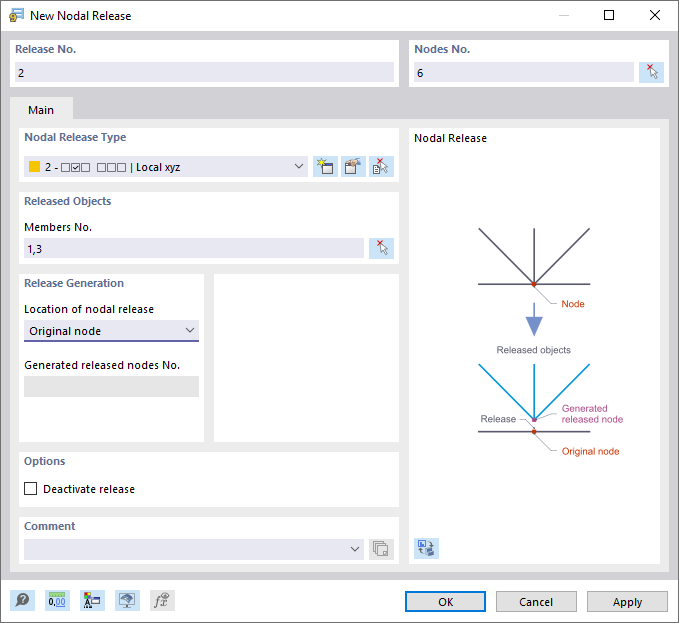A nodal release allows structural decoupling of the objects connected to a node. The release is controlled by hinge conditions, which may also have nonlinear properties.
A nodal release requires a member hinge. This hinge type is also used for models without members. The release properties refer to the axes of members or lines. All nonlinear properties for the transfer of internal forces that are possible for member hinges are available. The axes of a nodal release can be displayed graphically in the model.
At the released node, the program creates a new node with identical coordinates. Thus, decoupling of the model is completed. An invisible member is created between both nodes. The internal forces are regulated as for a member with the start in the original node and the end in the decoupled node.
Entering in RFEM/RSTAB
A nodal release can be defined using the menu "Insert" → "Special Objects" → "Nodal Releases" → "Dialog Box." In the dialog box, you can define release properties for the node as a "nodal release type" and specify the released objects. It is possible to select the nodal release type in the list box of the existing types or define a new release type.
Nodal releases are usually used for member connections. However, you can also capture surfaces or solids.
Application Examples
Nodal releases are particularly suitable for member models with nonlinear geometry. For example, nodal releases can be used to model member crossings with lifting beams, movable substructures, or coupled objects with special boundary conditions.
